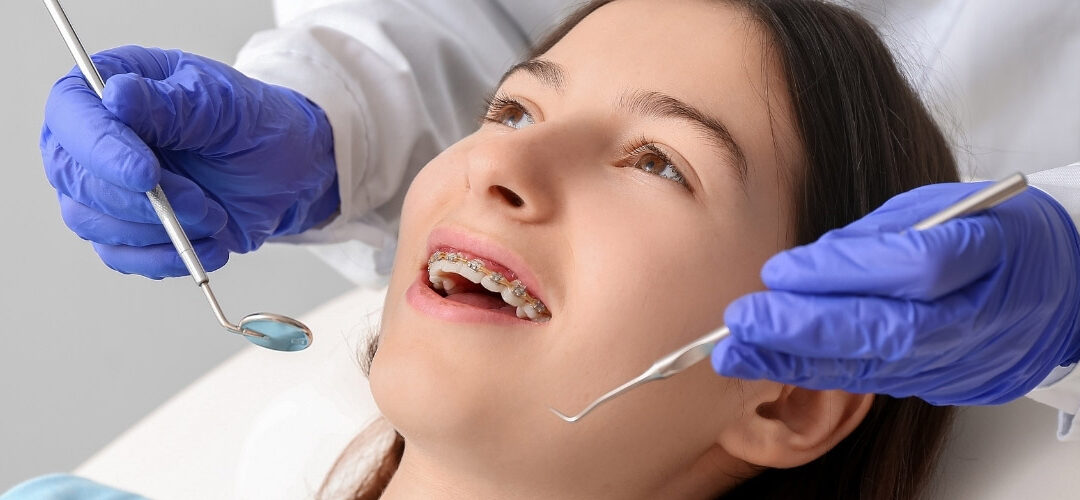Comprehensive Guide to Orthodontics Procedures for Fixing Dental Imbalances
In the world of orthodontics, the journey to accomplishing a flawlessly lined up smile entails a myriad of treatments customized to deal with oral misalignments. From standard dental braces to unseen aligners and even surgical choices, the area of orthodontics uses an array of services to attend to differing degrees of dental irregularities. Comprehending the intricacies of each treatment, including their mechanisms, advantages, and prospective downsides, is crucial in making notified decisions about one's orthodontic treatment. As we browse through the extensive overview to orthodontic treatments for fixing oral misalignments, the elaborate information of each technique will unfold, losing light on the path towards a unified and useful oral positioning.
Orthodontic Procedures Overview

In enhancement to typical dental braces and clear aligners, orthodontists might likewise advise other interventions like headgear, palatal expanders, or retainers to resolve details placement issues (orthodontics). These treatments are tailored per client's unique demands and might involve a combination of treatments to achieve the desired outcomes. Routine modifications and tracking are critical components of orthodontic treatment to ensure progression gets on track and to make any kind of necessary adjustments in the process. By undertaking orthodontic procedures, patients can not only achieve a straighter smile however likewise boost their total dental health and function.
Traditional Braces: Exactly How They Work
When considering orthodontic therapies for oral imbalances, typical dental braces stand out as a tried and true approach for dealing with teeth positioning. Conventional dental braces include braces, wires, and bands that interact to apply continuous stress on the teeth, slowly relocating them into the wanted alignment. The braces are connected to the teeth making use of an unique adhesive, and the cables are threaded via the braces. By readjusting the stress of the cords, orthodontists can manage the instructions and force used to each tooth, assisting them right into proper positioning over time.
One key aspect of just how standard braces job is the process of bone renovation. As pressure is used to the teeth via the braces, the bone bordering the teeth is reshaped to support the brand-new tooth settings. This improvement is vital for the long-lasting stability of the corrected positioning. Patients will certainly need routine changes at the orthodontist's workplace to make certain the dental braces proceed to apply the correct stress for reliable teeth activity.
Unseen Aligners: Advantages And Disadvantages
Invisible aligners offer a very discreet and hassle-free choice to conventional dental braces for correcting dental imbalances. These clear, tailor-made trays are basically undetectable when put on, making them an enticing choice for people seeking an extra aesthetically pleasing orthodontic therapy. Among the primary advantages of unnoticeable aligners is their removability, enabling simpler maintenance of oral health contrasted to typical dental braces. People can eliminate the aligners before eating or brushing their teeth, minimizing the danger of food obtaining embeded the appliance and simplifying the cleaning procedure.

Surgical Orthodontic Options
Surgical treatments in orthodontics present feasible options for resolving complex oral misalignments that might not be effectively dealt with via traditional orthodontic treatments. While unnoticeable aligners and standard dental braces can deal with lots of orthodontic issues, specific situations require surgical intervention to achieve optimal results. Surgical orthodontic alternatives are generally suggested for extreme malocclusions, considerable jaw inconsistencies, and situations where the underlying bone structure needs adjustment to achieve appropriate placement.
One usual medical orthodontic treatment is orthognathic surgical procedure, which includes rearranging the jaws to deal with functional concerns such as difficulty eating or speaking. This click resources surgical treatment is often done in partnership with an orthodontist that helps line up the teeth before and after the procedure. Surgical orthodontics may also involve treatments to reveal influenced teeth, eliminate excess periodontal tissue, or reshape the jawbone to produce an extra unified facial account.
Prior to thinking about surgical orthodontic options, patients go through a detailed evaluation to determine the necessity and possible advantages of such interventions. cumming aligners. While surgical treatment may appear complicated, it can dramatically improve both the feature and appearances of the smile in cases where traditional orthodontic therapies fall short
Retainers and Post-Treatment Care

Post-treatment care includes following the orthodontist's directions vigilantly. This may consist of correct dental hygiene techniques, going to follow-up appointments, and using the retainers as suggested. Failure to abide by post-treatment treatment directions can result in relapse, where the teeth slowly return in the direction of their original settings. Regular view it now retainer wear, excellent dental health, and routine dental examinations are important for maintaining the results attained via orthodontic surgery and making certain the lasting stability of the fixed oral placement.
Verdict
In final thought, orthodontic treatments provide different alternatives for remedying dental imbalances. Traditional braces utilize metal brackets and wires to change teeth right into correct placement. Undetectable aligners offer an even more discreet option but might not appropriate for all cases. Surgical orthodontic alternatives are available for a lot more severe misalignments. Retainers are generally used post-treatment to keep the brand-new positioning. On the whole, orthodontic procedures can properly improve oral health and aesthetic appearance.
As we browse through the extensive overview to orthodontic procedures for fixing oral misalignments, the intricate information of each approach will certainly unravel, losing light on the path toward a practical and harmonious dental placement. - cumming orthodontist
One of the most typical orthodontic therapies is the use of dental braces, which are composed of steel braces and wires that apply gentle pressure to progressively shift teeth right into right here the wanted setting.When considering orthodontic therapies for dental misalignments, conventional dental braces stand out as a reliable approach for correcting teeth positioning. Additionally, undetectable aligners may not be appropriate for complex orthodontic concerns that require more substantial teeth motion, as they are typically suggested for moderate to modest cases. Retainers are custom-made orthodontic devices created to hold teeth in their fixed positions after the completion of orthodontic treatment.